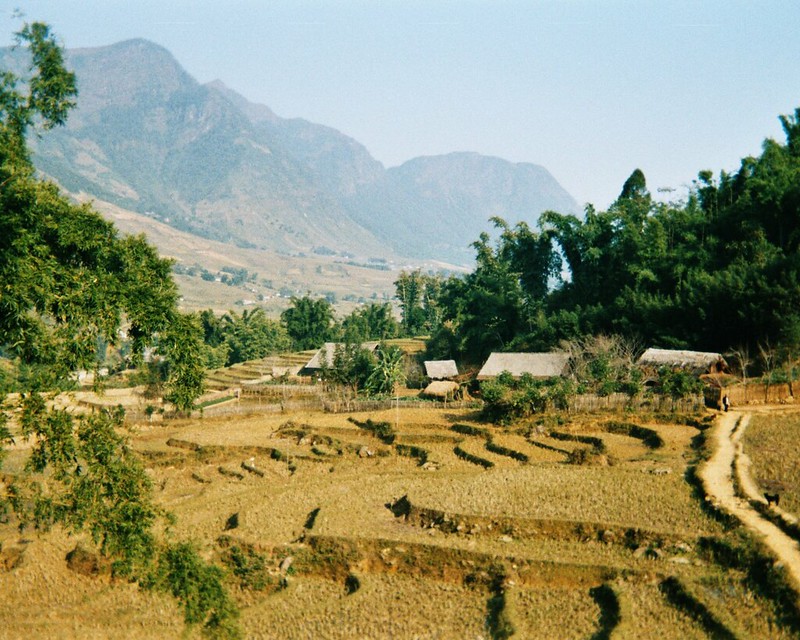Addressing Poverty Through Renewable Energy in Laos
 Laos, a Southeast Asian nation renowned for its abundant natural beauty and culturally diverse heritage, has grappled with the enduring challenge of poverty for several decades. As of 2018, a staggering 18.3% of its population lived below the poverty threshold, and this burden disproportionately affected those residing in rural areas. Moreover, 22.5% of Laos’s population lacked access to even basic sanitation facilities while 7.8% were deprived of access to clean, potable drinking water. Despite these challenges, recent years have witnessed remarkable progress in poverty alleviation through the adoption of renewable energy, marking a significant step toward a more sustainable and prosperous future for Laos.
Laos, a Southeast Asian nation renowned for its abundant natural beauty and culturally diverse heritage, has grappled with the enduring challenge of poverty for several decades. As of 2018, a staggering 18.3% of its population lived below the poverty threshold, and this burden disproportionately affected those residing in rural areas. Moreover, 22.5% of Laos’s population lacked access to even basic sanitation facilities while 7.8% were deprived of access to clean, potable drinking water. Despite these challenges, recent years have witnessed remarkable progress in poverty alleviation through the adoption of renewable energy, marking a significant step toward a more sustainable and prosperous future for Laos.
The Energy Landscape in Laos
Laos has abundant natural resources, including a vast network of rivers and forests that form the foundation of Laos’s renewable energy potential. The Mekong River and its tributaries traverse the country, offering immense hydropower potential. Additionally, Laos benefits from abundant solar energy resources due to its location in a region with high levels of sunlight.
Harnessing Hydropower for Prosperity
One of Laos’ most remarkable success stories in addressing poverty is developing aggressive hydropower projects, many of which export electricity to neighboring countries, such as Thailand and Vietnam, thereby generating substantial revenue. This revenue becomes a critical source of funding for social development programs aimed at reducing poverty. Electricity sales from projects including the Lao PDR’s Nam Theun 2 (NT2) generated more than $170 million for the government over the 25-year concession period, allowing the government to invest in priority development with education and health sectors receiving the largest investments.
The NT2 plays a crucial role in expanding Laos’ hydropower sector, which has minimal private involvement initially. Following its success, private financing led to the completion of five additional projects and 13 more projects achieved financial closure, creating a significant market. This surge in hydropower development directly and indirectly generates job opportunities for construction workers, maintenance technicians, administrators and others, substantially improving employment prospects and livelihoods for many Laotians.
Addressing Energy Poverty
Access to electricity is a fundamental driver of poverty alleviation. In Laos, rural regions often lack reliable access to energy sources, constraining economic opportunities and social development. Renewable energy in Laos, particularly micro-hydropower systems, bridges this energy gap in remote areas. Micro-hydropower projects are designed to provide electricity to small communities or villages in a sustainable and environmentally friendly manner. By electrifying rural areas, they enable the establishment of local businesses, such as small-scale agriculture and cottage industries, which can elevate income levels and reduce poverty rates. The Energy Sector Management Assistance Program helps bring power to 14,000 households in 230 villages through individual solar home systems and to 52,000 households in 570 villages through grid extension.
Educational Opportunities
Access to education is a fundamental right that can break the cycle of poverty. Currently, however, a significant barrier stands in the way of their schooling as nearly 30% of Laos’ rural villages do not have access to electricity. In rural areas of Laos, lack of electricity can hinder students’ ability to study after dark, limiting their educational opportunities. While the presence of electricity is taken for granted by many across the world, its absence is preventing many citizens, especially girls and women in Laos, from pursuing an education that would in the long term, empower them to break the cycle of poverty.
Renewable energy, through the electrification of schools and the provision of solar-powered lighting, extends study hours and improves the quality of education by helping school children do their homework in the evening. Additionally, the availability of electricity facilitates the use of technology in classrooms, enabling students to access a wider range of educational resources. This enhances the learning experience while equipping students with skills necessary for future employment, further contributing to poverty reduction.
What’s Next?
Renewable energy in Laos is a technological advancement and a powerful tool for poverty alleviation and sustainable development. By harnessing the abundant hydropower and solar resources, Laos unlocks new opportunities for its people, providing them with access to clean energy, better livelihoods and improved education. As Laos continues to invest in renewable energy, it makes significant strides toward eradicating poverty, fostering economic growth and building a brighter future for its citizens.
–Marnie Woodford-Venables
Photo: Flickr
